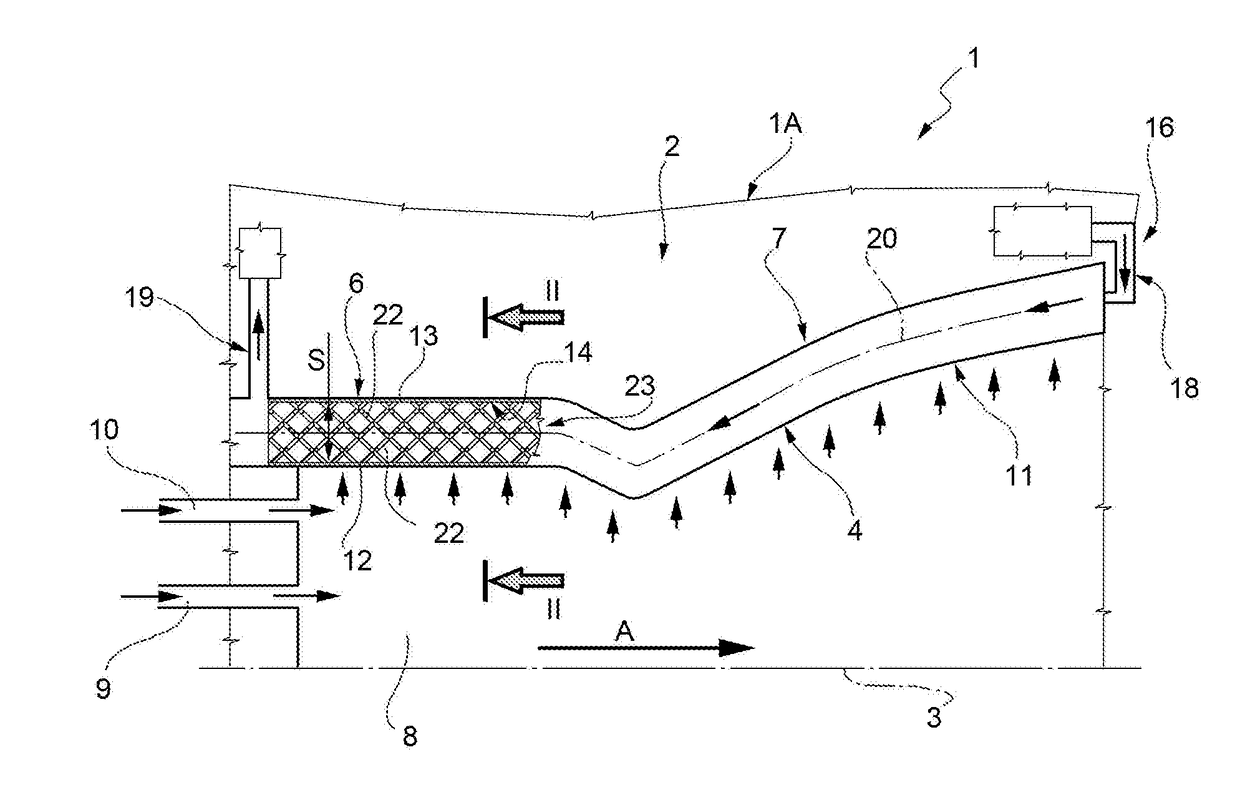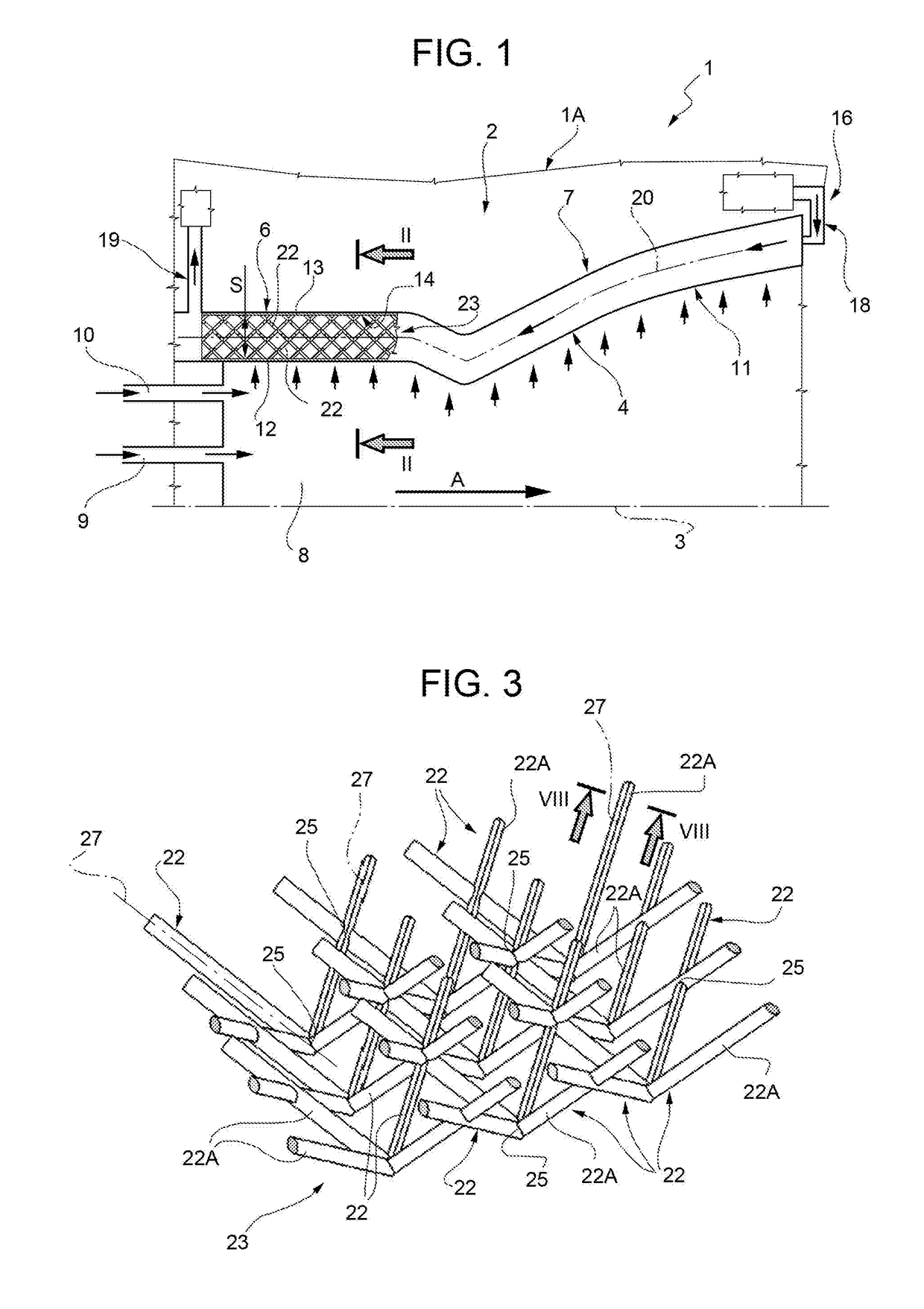Combustor of a liquid propellent motor
a liquid propellent motor and combustion chamber technology, which is applied in the direction of combustion process, stationary tubular conduit assembly, lighting and heating apparatus, etc., can solve the known casing of the above-described type is not very satisfactory, and the physical limit of increasing the heat exchange surface is not allowed. , to achieve the effect of high efficiency and reliability, simple structure, and low weigh
- Summary
- Abstract
- Description
- Claims
- Application Information
AI Technical Summary
Benefits of technology
Problems solved by technology
Method used
Image
Examples
Embodiment Construction
[0033]In FIG. 1, reference numeral 1 indicates, as a whole and with parts removed for clarity, a liquid propellent spacecraft motor.
[0034]Motor 1 comprises a thrust chamber 1A, comprising, in turn, an elongated combustor 2 having its own axis 3. Combustor 2 comprises a tubular metal casing 4. Casing 4 is shaped coaxially to axis 3 and, in the feeding direction of the combustion product indicated with arrow A in FIG. 1, comprises a tubular portion 6 with a cylindrical generating line and a shaped tubular portion 7, both coaxial to axis 3 and stably connected to each other in a fluid-tight manner (FIG. 1).
[0035]The tubular portion 6 laterally delimits a combustion chamber 8, in which a feeding conduit 9 of the liquid propellent and a feeding conduit 10 of the combustion supporting fluid, forming part of the thrust chamber 1A, lead.
[0036]Instead, the shaped tubular portion 7 delimits a converging-diverging nozzle 11, known per se, through which the combustion products generated in the ...
PUM
 Login to View More
Login to View More Abstract
Description
Claims
Application Information
 Login to View More
Login to View More - R&D
- Intellectual Property
- Life Sciences
- Materials
- Tech Scout
- Unparalleled Data Quality
- Higher Quality Content
- 60% Fewer Hallucinations
Browse by: Latest US Patents, China's latest patents, Technical Efficacy Thesaurus, Application Domain, Technology Topic, Popular Technical Reports.
© 2025 PatSnap. All rights reserved.Legal|Privacy policy|Modern Slavery Act Transparency Statement|Sitemap|About US| Contact US: help@patsnap.com



